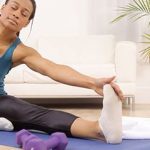
(HealthDay News) – General Mills has recalled four varieties of its Gold Medal flour because of concerns over potential contamination with salmonella. The recalled flour has “better if used by” dates of March 27, 2024, and March 28, 2024, according to the U.S. Food and Drug Administration. The recalled products are both bleached and unbleached all-purpose flour in 2-, 5- and 10-pound bags. Other types of Gold Medal flour are not affected by the recall. Those who find recalled flour in their pantries should throw it out, the company said. The recall was issued after a sampling of the 5-pound size flour detected the potential presence of the bacteria. The FDA and the Centers for Disease Control and Prevention always recommend that consumers don’t eat raw products made with any flour. The bacteria is killed through baking, frying, sautéing or boiling. Always clean all surfaces, hands and utensils that come into contact with uncooked flour or dough. Anyone who finds recalled flour in their kitchen and discards it can contact General Mills Consumer Relations at 1-800-230-8103. About 1.2 million people are infected with salmonella each year in the United States. Healthy people may experience nausea, diarrhea, fever and abdominal pains about six hours to six days after infection. This can last four to seven days. Some people become so ill they may need to be… read on > read on >


















